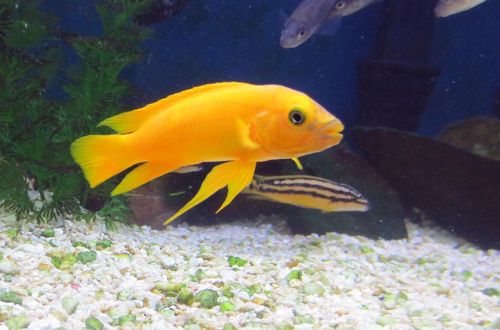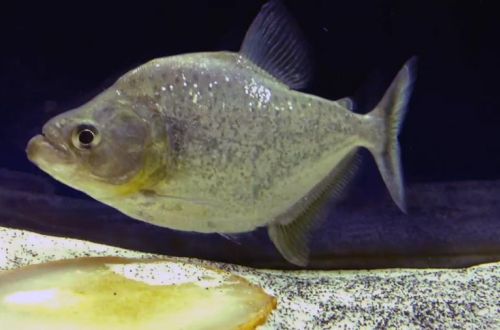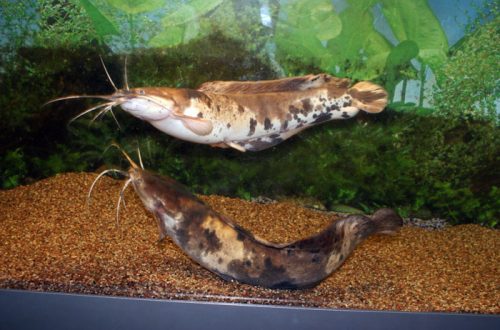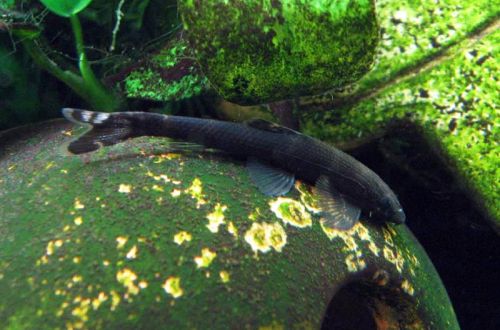
lemon cichlid
Orange Lamprologus or Lemon Cichlid, scientific name Neolamprologus leleupi, belongs to the Cichlidae family. Endemic to Lake Tanganyika in East Africa. Found in the southern part of the lake along the rocky shoreline. It is one of the most popular cichlids due to its bright coloration. However, it is not suitable for beginner aquarists because it needs high water quality and also has very complex intraspecific relationships.

Contents
Description
Adult individuals reach a length of up to 10 cm. The color is monophonic, the color varies from yellow to brownish. Sexual dimorphism is weakly expressed, small differences are noticeable in the size of the pelvic fins, in females they are shorter.

Brief information:
- The volume of the aquarium – from 70 liters.
- Temperature – 23-27°C
- Value pH — 7.5–9.0
- Water hardness – medium to high hardness (8-25 dGH)
- Substrate type – sandy
- Lighting – subdued / moderate
- Brackish water – no
- Water movement is weak
- The size of the fish is 10 cm.
- Nutrition – meat feed with vegetable additives
- Temperament – conditionally peaceful, with the exception of spawning periods
- Content – singly or in a formed male / female pair
Food
The basis of the diet should be meat products, such as bloodworms and brine shrimp, live or frozen. Serve vegetable flakes as an accompaniment. For a balanced diet, you should give preference to specialized feeds from well-known manufacturers with a high protein content.
Maintenance and care, arrangement of the aquarium
The optimal sizes for one pair of fish start at 70 liters. The design is quite simple, you need a sandy substrate, piles of stones or rocks, from which shelters are formed in the form of caves and grottoes, simple ceramic pots overturned on their side are also suitable.
Successful keeping of Lemon cichlid is possible in conditions of very clean water and high values of hydrochemical parameters pH and dGH. To maintain the proper quality of water, in addition to its weekly replacement (20–25% of the volume), it will be necessary to install a productive filtration system, as well as regularly clean the soil from organic waste.
Behavior and Compatibility
Relatively peaceful fish in relation to other species, with the exception of spawning periods, when males become overly aggressive in an effort to protect their territory. The greatest hostility is shown by males in relation to arcs to a friend, therefore it is permissible to keep only one adult male / female pair in one aquarium. As neighbors, you can use other fish from Lake Tanganyika and Malawi, except for the Mbuna species, or any other species that can live in similar conditions.
Breeding / breeding
This species is monogamous, the fish form a permanent pair, which persists throughout their life. It is worth noting that not every male and female are suitable for each other, if you buy adult fish and place them in one aquarium, then most likely one of them will be killed. The appearance of a pair is possible only among young fish as they grow older, when they are still in the group.
Spawning occurs secretly, often the aquarist finds out about the appearance of fry when they already begin to swim around the aquarium. During the mating season, the female chooses a reliable shelter and lays up to 150 eggs, attaching them to the roof of the cave. The incubation period lasts 3-4 days, then for 8-10 days the juveniles will be in shelter. Parents at this time will be near the entrance to the cave, protecting it from potential danger. The fry can stay with their parents for about 6 weeks, after which they must be removed to a separate tank, otherwise they will be eaten.
Fish diseases
The main cause of most diseases of cichlids from Lake Tanganyika is unsuitable housing conditions and poor quality food, which often leads to such a disease as African bloat. If the first symptoms are detected, you should check the water parameters and the presence of high concentrations of hazardous substances (ammonia, nitrites, nitrates, etc.), if necessary, bring all indicators back to normal and only then proceed with treatment. Read more about symptoms and treatments in the Aquarium Fish Diseases section.





